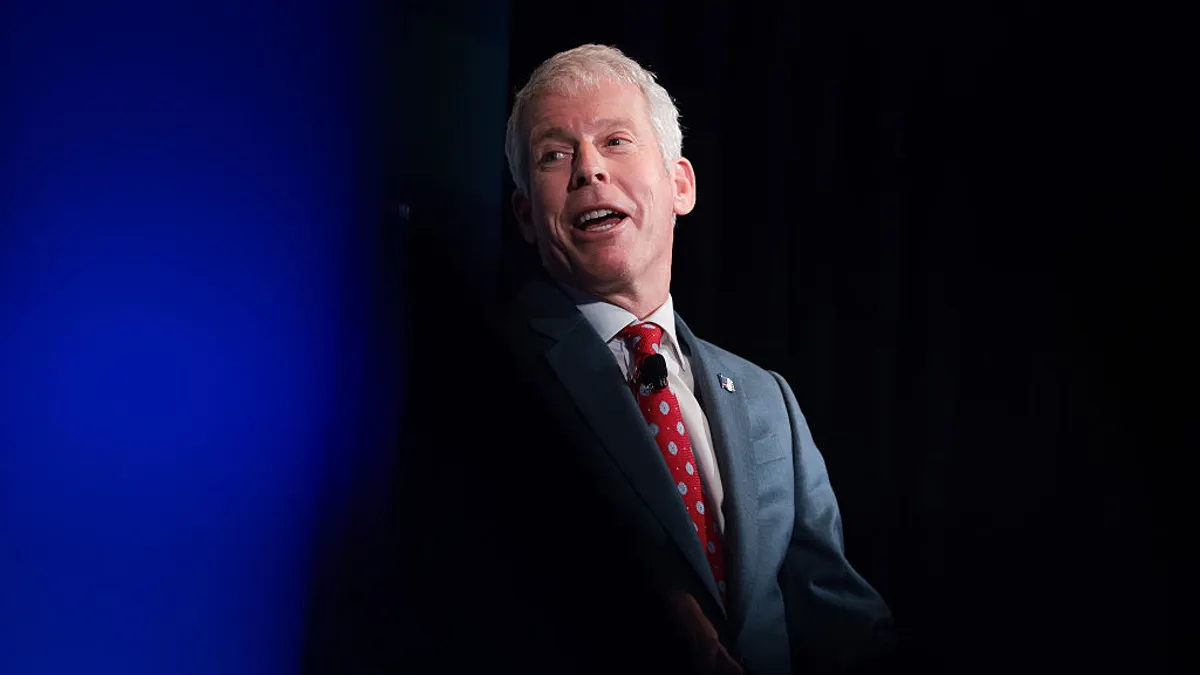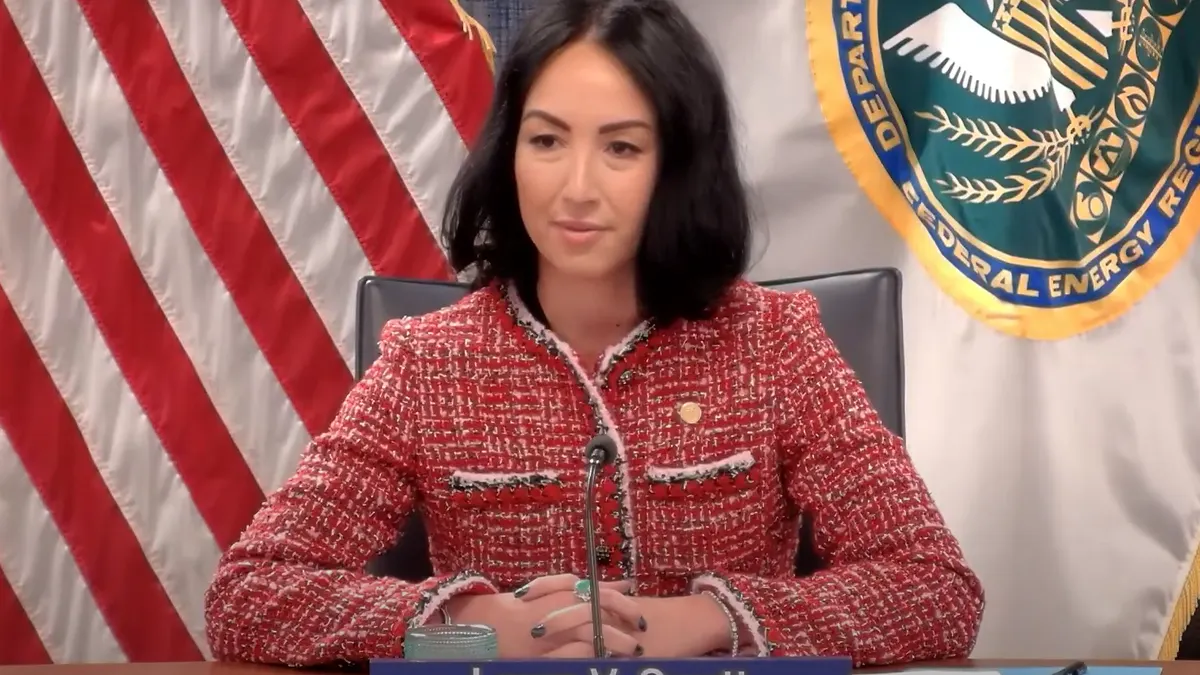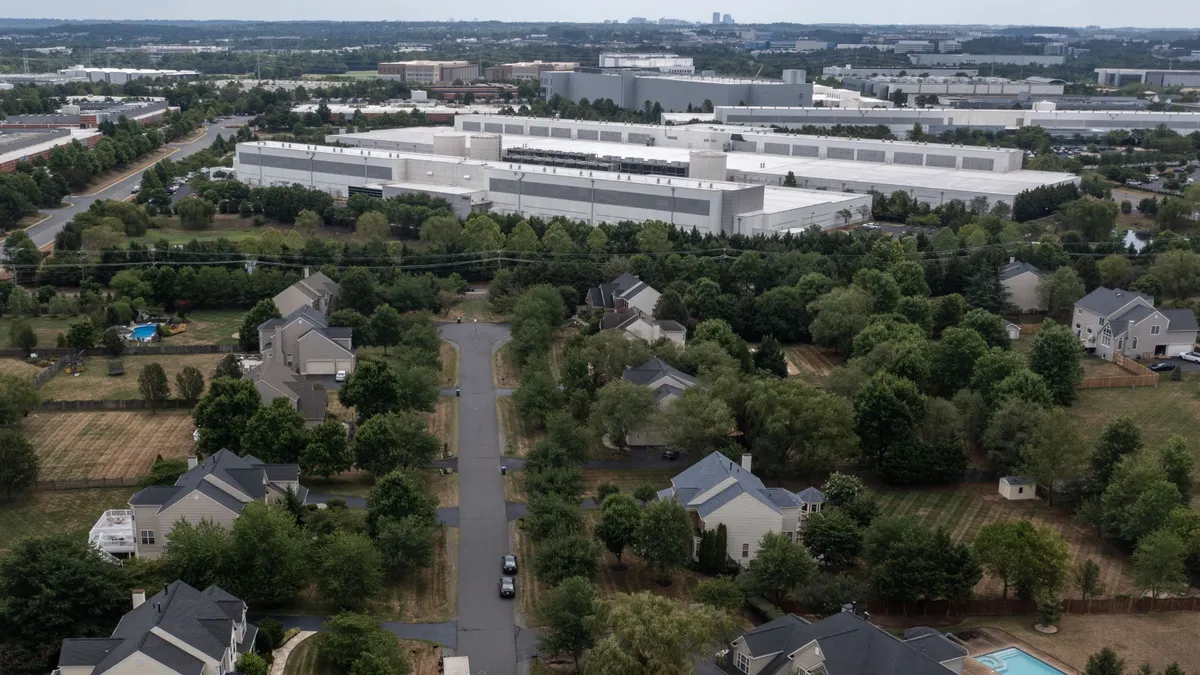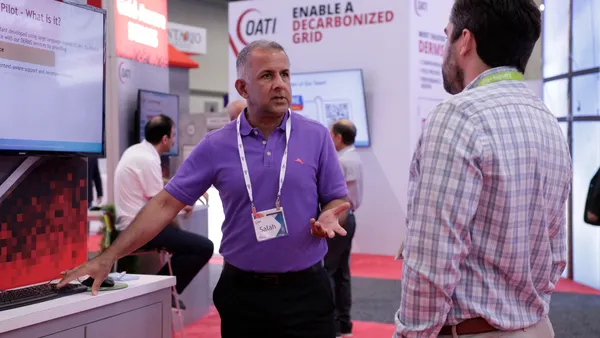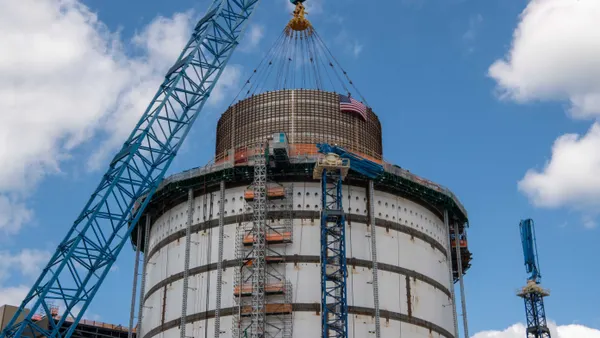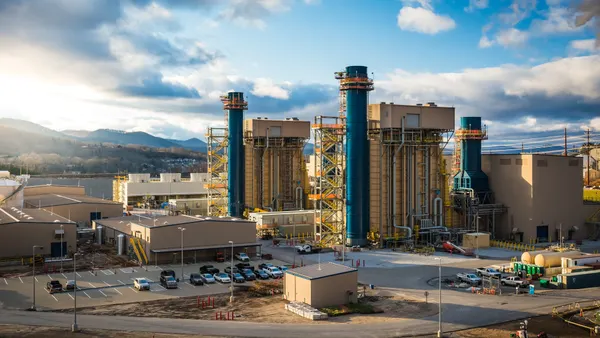Dive Brief:
- The Department of Energy said in a late Thursday release that it is directing the Federal Energy Regulatory Commission to initiate rulemaking it has proposed to give FERC jurisdiction over the interconnections of loads larger than 20 MW, to “rapidly accelerate” their addition to the grid.
- The rule cites load growth driven by AI and manufacturing, which will require “unprecedented and extraordinary quantities of electricity,” as the reason for an altered approach to large load interconnection.
- “This is quite unusual,” said Nick Guidi, a senior attorney with the Southern Environmental Law Center, in an email. “DOE has the power under section 403 of the Department of Energy Organization Act to propose rules to FERC. There’s no obligation for FERC to adopt them, but I believe they have to respond.”
Dive Insight:
“Historically, the Commission has not exerted jurisdiction over load interconnections,” Secretary of Energy Chris Wright said in a letter to FERC’s chair and commissioners Thursday.
“It is my view that the interconnection of large loads directly to the interstate transmission system ... to access the transmission system and the electricity transmitted over it falls squarely within the Commission's jurisdiction,” he said. “Asserting Commission jurisdiction is in the public's interest.”
The proposed rule provided by Wright says it seeks to avoid “even arguably affecting” states’ rights by limiting FERC’s jurisdiction to interconnections directly to transmission facilities.
It also emphasized the need for uniform standards and called for rewarding large load flexibility.
The proposed rule’s principles for reform state that load and hybrid facilities should be subject to “standardized study deposits, readiness requirements, and withdrawal penalties” while hybrid facilities “should be studied based on the amount of injection and/or withdrawal rights requested.”
“The interconnection study of large loads that agree to be curtailable and hybrid facilities that agree to be curtailable and dispatchable should be expedited,” the rule said.
In his letter, Wright asks that FERC take final action by April 30, 2026.
Former FERC Chair Mark Christie said in a Friday LinkedIn post that he wants to know if “reliable power service [could] be threatened by FERC-mandated interconnection of large load customers without sufficient generation capacity available to the grid operator.”
He also questioned if residential and other customers would bear the cost of these interconnections and whether the proposal represents “an unprecedented expansion of federal control and intrusion on the states’ historic retail regulatory authority.”
“It is extremely rare that DOE files a proposed rule at FERC,” said Ari Peskoe, director of the Electricity Law Initiative at Harvard Law School, in a post on X. “This one is, legally speaking, particularly odd. It also gives FERC a teeny tiny boost in the pending litigation about Order No. 1920 (regional transmission planning).”
Peskoe wrote that he is “struggling to come up with an analogous FERC rulemaking where FERC expands its authority like this.” This jurisdictional expansion would be “something entirely new” for the commission, he said.
Guidi said that DOE previously used the Department of Energy Organization Act’s section 403 authority “a couple months ago, asking FERC to repeal its proposed policy statement on gas pipeline certificates. FERC obliged.”
“Before that, the real high-profile example was Rick Perry in the first Trump Administration asking FERC to bail out coal and nuclear units,” he said. “FERC rejected that one unanimously. I’m not aware of any other examples.”
In a Friday morning analysis, strategy firm Capstone DC said it expects FERC to publish the proposed rule, as former Chair David Rosner, D, incoming Chair Laura Swett, R, and recently confirmed Commissioner David LaCerte, R, “are likely to support this measure.”
It added, however, that the rule’s proposed standards raise “significant legal questions over federal vs. state jurisdiction,” and that investor-owned utilities are “very likely to object to the DOE’s interpretation.”
Mario Loyola, a senior fellow at the Heritage Foundation, said in an email that the DOE Organization Act “specifically empowers the Secretary of Energy to propose regulations that then have to be considered and voted on by FERC.”
Loyola called yesterday’s proposal “a crucial element of the Trump administration’s effort to expand electric generation and transmission capacity, because the nation's electricity markets have become badly distorted by a combination of overregulation and renewable subsidies, and are in urgent need of reform.”
In a thread on X, NRG Vice President of Regulatory Affairs Travis Kavulla said Wright had invoked a “seldom-used authority” of the DOE Organization Act and that “utilities will oppose this [and will] seek to make it a dead letter by saying there is always some part of interconnection that is ‘distribution’ (not ‘transmission’), thus retaining a parochial claim to their gatekeeper status.”
But Kavulla also wrote that he thinks the proposal is “probably not the worst idea.”
“This action could very well be valid,” Guidi said, though he also noted that states’ rights are at issue. “This is a hugely important issue and I think it’s positive that DOE has squarely teed this issue up for FERC to decide because it has not been settled to this point. And clearly there is real urgency with the sheer quantity of demand looking to connect. I’m looking forward to a hotly contested discussion in this docket at FERC.”



